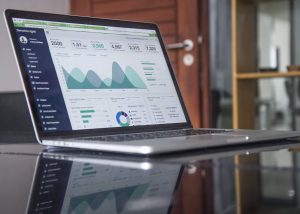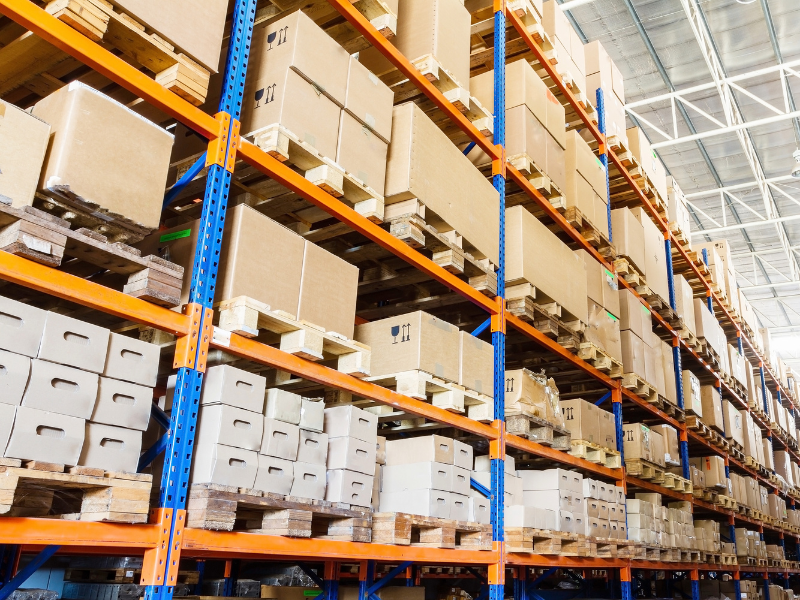It’s no secret that it’s harder than ever for brick-and-mortar retail businesses to survive, much less thrive. In today’s world, retailers need to use every tool that’s available to them to gain an edge. Of course, the tools of yesteryear aren’t always going to be enough.
Retailers need to embrace the use of modern tools like data and analytics in order to maximize their success. For many retailers, scale solutions that gather the all-important data can hold the key to running a successful business. Let’s dive deep into the role that data and analytics can play for retailers.
Accumulating Information

The use of data and analytics in retail begins with accumulating information. Many years ago, businesses used spreadsheets to compile and analyze all of the information they had about sales. But that process was long and complicated. It was often hard to draw conclusions or ensure that information was used in the most effective way possible. Moreover, it was a time-consuming and labor-intensive process with no guarantee that businesses would uncover insights that would make the whole process worthwhile.
Fortunately, that’s not the way things are done anymore. For modern retailers, big data can be collected through every sale and transaction by utilizing scale solutions. With modern technology, especially artificial intelligence (AI), the amount of business data that can be collected is almost overwhelming. However, thanks to that technology, data can be collected and analyzed more efficiently and in a more meaningful way to track relevant trends and help businesses make informed decisions about how to conduct business.
Getting to Know Your Customers

One of the best ways to use data in retail is to get to know your customers better. Every sale made has the potential to provide critical insight into customer behavior and preferences. Each individual customer has their own transaction history while compiling sales data from all customers helps to create large-scale purchase patterns. By analyzing all of this data together, it’s possible to learn exactly what customers like and what they want.
In retail, it should be no secret that customer behaviors change over time. It’s essential that retailers are able to keep up with these changes in real-time and understand what customers want. Retailers who don’t know their customers are destined to be left behind because they aren’t adjusting to the market quickly enough. In today’s world, that requires using data and analytics to learn as much as possible about customers and their habits.
Customer Personalization
Given the information that’s collected and analyzed about customers and their shopping habits, it becomes possible to personalize the shopping experience for customers as much as possible. For example, previous purchases made by a customer can help retailers suggest other products for customers to put in their shopping cart. Likewise, data from customers who have all bought the same product can also lead to personalized recommendations based on other purchases made by similar customers.
Either way, the marketing and advertisements that customers see will be as targeted as possible, making them more likely to be successful. As mentioned, it’s all about understanding what customers want and offering products that will interest them. By understanding what customers might like and the kind of ads and marketing they will be receptive to, businesses can set themselves up for success.
With consumers being shown so many different items and advertisements, if recommendations and advertisements aren’t targeted and personalized, they don’t always have much chance of success, making it more important for retailers to use analytics to personalize things for customers.
The Customer Journey

Obviously, customer purchases are the end of the line. Analyzing the journey that customers take on their way to that purchase matters as well. With data and analytics, retailers can gain insight into what products customers may have been looking at before making their purchase and where they sought information about those products. After all, modern consumers want to collect as much information as possible before making a big purchase. They always want to know that they are betting on the best product possible that fits their needs. By gaining insight into this journey, retailers will know how better to approach consumers on their journey and guide them to a particular product.
Predicting Demand

While data and analytics can be applied to specific customers on a small scale, it’s equally useful on a larger scale. Past trends in consumer behavior are often the best way to predict future demand. Some consumer trends tend to be seasonal or cyclical, and retailers need to be prepared for those trends when it comes to maintaining inventory or promoting specific products at the right time.
Retailers can’t afford to be late to recognize certain trends or spikes in sales because they could be caught without enough inventory or beaten out by a competitor. But by harnessing the power of analytics, retailers can predict what’s ahead and always be prepared.
Price Optimization
Being a successful retailer isn’t just about maximizing sales; it’s also about getting the price right on every product. By using data and analytics, retailers can make sure they are putting the right price tag on products and avoid overcharging or undercharging.
Keep in mind that there are a lot of factors that go into putting the right price on things. Of course, there is supply and demand. But retailers also need to understand what customers want and how competing businesses are pricing items. Compiling all of this information and analyzing it can help guide retailers to the proper price for every product.
Moreover, with analytics, it becomes easier for retailers to test products at different prices to gauge if a change in price alters sales. This is another way that data and analytics can be used to get products at their optimal price in a way that will maximize sales and profitability.
Selling the Right Products
In addition to selling products at the right price, retailers need to make sure they are making the right products available to customers. Customer data can tell retailers what products are selling the most and what products are being ignored. This can be relevant when it comes to competing products or even different categories of products. If a certain category is underperforming, a retailer may not be offering the right product.
There are always ways that retailers can make small changes to better serve their customers. The trick is having the data available and the means to analyze that data in order to see what products are working and what products aren’t as successful. Understanding this can help to improve product offerings, which will ultimately lead to more sales and better customer loyalty.
Inventory Management

Part of offering the right products for customers is making sure that products are properly stocked. Fortunately, analytics from sales can also play a key role in making sure retailers are managing their inventory properly. If analytics can help to predict future trends in sales, it can also help to predict future inventory needs.
Collecting this data with the use of scale solutions, retailers can understand what products need to be well stocked and – equally important – what products may not need to be restocked as much. For small retailers with limited space for inventory, it’s critical to make good decisions when it comes to inventory management. Analyzing sales data can help make those choices, reducing the chances of overstocking or understocking products.
Managing Multiple Locations
Any retailer that operates multiple locations or has an e-commerce platform can use data and analytics to tie together sales from all locations and platforms. It can be critical to analyze how sales vary from one location to the next. Are there products that sell better online or at a particular brick-and-mortar location? Are there customers that are selling across all platforms and locations regardless of geography? It’s imperative for retailers to have this information so that they can understand both local trends at a particular location and large-scale trends throughout the entire business.
Ultimately, by collecting and analyzing as much data as possible with the use of scale solutions, retailers can maximize their sales and success across every location and platform.
Want to learn more about gathering data with our scale solutions? Reach out to our experts today to discover how we can help you maximize your retail business operations and experience rapid growth.




